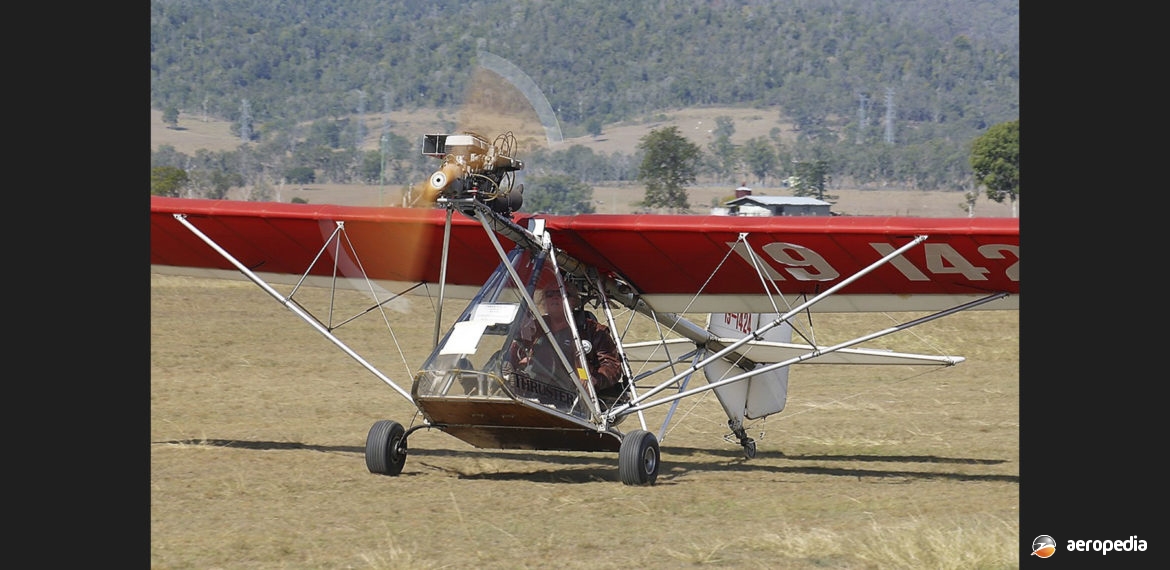Photograph:
Thruster T-84 Glasshouse 19-1424 (c/n not known) at Watts Bridge, QLD in 2005 (C Murray)
Country of origin:
Australia
Description:
Two-seat ultralight aircraft
Power Plant:
One Jabiru 60 kw (80 hp) 2200 cc four-cylinder horizontally-opposed air-cooled engine
Specifications:
- Loaded weight: 450 kg (992 lb)
History:
The Thruster Glasshouse was one of many ultralight designs from Steven Cohen and was produced by Thruster Aircraft commencing in 1984. At that time the Thruster series was finding a ready market in the ultralight field and appeared in a number of variants, including the T-84A, which was developed to the T-84G and then the T-85SG. Late in 1984 the T-84B appeared with a 9.02 m (29 ft 6 in) wingspan. With acceptance by the market a two-seat model was developed and this was known as the T-84TPT for the training of ultralight pilots, and the Thruster T-84 Utility.
Nine examples of the Glasshouse are known to have been built and can be recognised by the slab-side fuselage with an enclosed glazed nose. One example is known to survive, this being converted to single-seat configuration and was last noted at Watts Bridge, QLD. The Glasshouse was important in the market for ultralight aircraft in this region as it was the first Australian designed two-seat aircraft and had a structure that went on to be used in certified two-seat trainers with flying schools.
Eventually Thruster Aircraft took over production of the series, particularly the two-seat model, to meet Regulation 95.25 and in 1984 main production was the up-graded T-85B and T-85C, the latter having the wingspan extended to 9.63 m (31 ft 6 in). It is known a number of single-seat models were fitted and operated with floats.
Thruster went on to develop the design to the Gemini X, this having a pod and a windscreen. As time went by early Geminis began to show signs of wear of the airframe during operational use and some re-design brought about the Gemini B with some strengthening and narrower chord ailerons for handling improvement.
A few examples of the Gemini and Glasshouse were returned to the manufacturer’s facility for upgrading to Regulation 95.25 standard and another was rebuilt privately, appearing similar to a T-500. A variety of engines could be and have been fitted to the series including the Rotax 503, 532, 582 and 912, driving a Brolga three-blade propeller.
Examples of the Glasshouse known to have been completed include 19-3153 (c/n GH002) and 19-1424 c/n not known – ex 10-1424).

